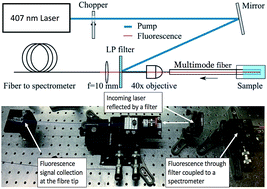*
Corresponding authors
a
ARC Centre of Excellence for Nanoscale BioPhotonics, Institute for Photonics and Advanced Sensing, The University of Adelaide, Adelaide, SA 5005, Australia
E-mail:
Yinlan.ruan@adelaide.edu.au
b
Guangdong Innovative Research Team, State Key Laboratory of Luminescent Materials & Devices, South China University of Technology, Guangzhou, P. R. China
c
Wuhan National Laboratory for Optoelectronics, Huazhong University of Science and Technology, Wuhan, China
d
Global Centre for Environmental Remediation, The University of Newcastle, Callaghan, New South Wales, Australia
e
Department of Chemistry, Hong Kong Branch of Chinese National Engineering Research Centre for Tissue Restoration and Reconstruction, The Hong Kong University of Science & Technology, Clear Water Bay, Kowloon, Hong Kong, P. R. China
f
Centre for NanoScale Science and Technology, Centre for Maritime Engineering, Control and Imaging, School of Computer Science, Engineering and Mathematics, Flinders University, South Australia, Australia


 Please wait while we load your content...
Please wait while we load your content...